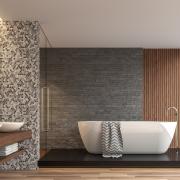Unless you can afford a Monet or a Francis Bacon, art can make a poor investment, but with a little expert help you can choose something that looks great. Design director Naomi Pound and gallery director Bridget Sterling offer some tips on choosing the right artwork for your home
Know where to look
If you’re new to buying art, knowing where to start can be one of the most daunting aspects. “With the internet such a popular starting point for all kinds of purchasing decisions these days, people often think it’s better to approach artists directly online, rather than going through a gallery,” explains Bridget. “But if an artist is being represented by a gallery, their work will sell at the same price as when buying directly.”
Naomi also recommends visiting the Affordable Art Fair, plus taking in exhibitions at art schools, where you can meet talented emerging young artists eager for a commission.
Have a budget in mind
Contemporary art is an especially risky investment, as it’s impossible to know what sort of value a particular artist’s work will hold in years to come. For entry-level buyers in particular, Bridget recommends original prints. Unlike a giclée print (a reproduction print produced on an ink-jet printer), an original print has been hand printed by an artist. With prices starting at around £50-100, they don’t have to be an expensive option and hold their value far more than a reproduction.
Find an emotional connection
Whether it reminds you of a special holiday, a specific memory, or just gives you a good feeling, both Naomi and Bridget agree that the most important factor to consider when buying art for your home is finding an emotional connection. “You must buy art because you love it,” says Bridget. “You’ll know when you have it because the piece will jump off the wall and wrap itself around you.”
Naomi adds: “It’s vital to remember that artwork will become the focal point of a room. It’s probably one of the single most important purchases you’ll make for your interior. But as long as you go for something you truly connect with, you won’t go too far wrong.”
Create a ‘flow’
At a basic level, this means choosing colours that complement each other, either matching a piece of artwork to your existing colour scheme, or picking two or three colours from the piece and adding accents from that around the room.
Try to repeat shapes and angles throughout your scheme. “If your furniture features hard, industrial edges, choose artwork that incorporates sharp lines and angles,” recommends Naomi. “It’s about making sure that nothing jars and everything talks to each other.”
Consider your space
Whichever room you’re buying for, Naomi’s advice is to think about the atmosphere you’d like to create there. “Some artists have a noisy energy to their style and their work often fits well within busy environments such as kitchens and living areas; quieter pieces work better in rooms where you might want to create a calmer setting, such as bedrooms and bathrooms.” It’s also important to make sure you consider scale.
Think before you hang
It sounds obvious, but try not to hang paintings too high, even if you have high ceilings; they should be at eye level, not above your head.
While picture lights are an obvious choice for making sure your artwork stands out, Naomi urges caution. “Picture lights can interfere with the artwork, so instead, I’d recommend recessed down-lighters, especially if they’re directional, so you can angle them to wash the wall with light without shining directly on your piece.
“Choose from ‘warm white’ (more yellowy light), or ‘cool white’ (more bluish light – similar to daylight) according to the tones in the artwork or room colour scheme that you’d like to highlight.” A more expensive option is a framing projector, a concealed light source that can be used to precisely frame paintings or objects of any shape.



























